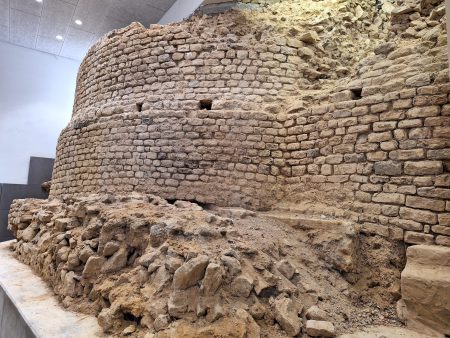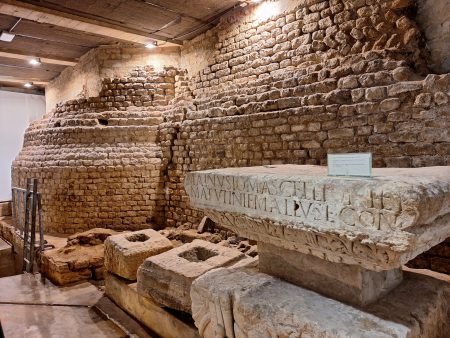The Roman towers
The Roman towers are a must-see site in Arlon. They stand testament to the Gallo-Roman era. Arlon is one of Belgium’s three oldest cities, and lies at the crossroads of two major Roman roads: Metz-Tongres and Reims-Trèves.
In Roman times, an enclosure was built by the Roman army. With a circumference of just over 870m, an average thickness of 4m and a height of around 8m, the rampart was opened by imposing gates and punctuated by some twenty towers. The Romans used sculpted blocks and fragments of funerary monuments to lay the foundations of the ramparts.
The Jupiter and Neptune Roman towers are listed and recognized as part of Wallonia’s exceptional heritage.
Jupiter Tower
It was created in 2009. It’s named after the discovery of a magnificent bas-relief depicting Jupiter in its foundations. The block can still be seen on the site, along with other carved blocks that were discovered during the excavations.
The tower can be seen from the Rue du Marquisat car park.
Neptune Tower
The Neptune Tower was discovered by chance in 1948 during work on a house. In the foundations of the wall, the remains of carved stone can be seen, including a superb bas-relief depicting Neptune, who the tower was named after.
Practical information
You can now visit the Roman Towers on your own.
At our reception desk, you can obtain a magnetic card that will give you access to these sites.
Entrance to both towers costs:
5€/person
4€/person (groups of more than 10 people)
1€/pupil (school groups, free for children under 12)
Free for children under 12.
A deposit of €20 (in cash) is required for the card.
You can visit the towers with the magnetic card between 10am and 4.30pm. The card must be returned to the Tourist Office before it closes (5pm).
Naturally, it is always possible to visit the towers accompanied by a Tourist Office guide. Don’t hesitate to contact us for more information.


